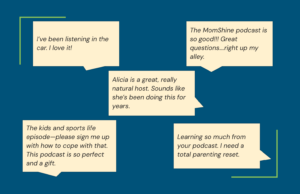8 Family Activities While Traveling in Australia with Kids
My husband and I started planning a trip to the land down under no less than six months before leaving. We secured our flights in an epic Cyber Monday deal on Air New Zealand, allowing my 3-year-old and me to sleep comfortably on a skycouch to and from the airport. A skycouch collapses a 3-row seating arrangement into a comfy bed. We slept like kings. So when we arrived, we could tackle some of these big adventures!
I also learned that only .2% of Americans visit Australia yearly, or roughly 650,000. This is surprising when 5% of Australians visit the States. And my kids had so much fun, and it is easy to travel here. So here’s my must-do list for a good family time out in Australia.
Family Activities in Australia to Do with Kids
1. Visit the Currumbin Wildlife Sanctuary in Australia
The Currumbin Wildlife Sanctuary was a big hit for my kids. We splurged and held and took photos with koalas. The pelican and eel feeding was excellent at the start, and petting kangaroos together is something we will never forget. Locals told us we took photos with “big reds,” which are massive kangaroos in Australia. This one in the photo is just a baby, but some others are massive.

2. Go to Byron Bay with the whole family
First, upon arrival in Byron Bay, our local Aussie friends had handmade the local birds' favorite seeds, complete with dog food mixed in to help with the calcium needed for strong beaks. Within the first few mornings, birds were eating out of my kids’ hands, and many return customers asked for more.

The Byron Bay Street Fair was also fantastic, and we got something special we needed—granola to help the gut, bug ointments, candles, handmade soap, and custom-made bell bottoms. There are only four a year, so consult local sites to learn when they are and plan a trip around it if you can. The one we went to was the Beachside Market featured on this website.
3. Find your way to the Crystal Palace
The Crystal Palace was an incredible visit for our family and an easy drive from our accommodations in Byron Bay. It features some of the most giant geodes in the world, sacred bodhi trees, a Kora you can walk and pray around, and more. My kids were intrigued as we walked the grounds, enamored by the largest sparkles we’d ever seen and bamboo reeds that reached as tall as buildings. It was something I’ll never forget: praying, giving gratitude, and taking in all the energy of this beautiful place.

4. Take a paddle on Brunswick River as a family
I love standup paddling and reminisced with my oldest that they didn’t even have it when I was growing up. It didn’t take off until the 90s and was attributed to Laird Hamilton when he modernized it as a sport. Either way, I love it. We take turns paddling and taking in the sights. We saw sting rays, fish, pelicans, and kookaburras.

5. Go to The Farm in Byron Bay with your kids
The Farm in Byron Bay was also an excellent visit. There is a great cafe and playground for kids, and my favorite part was learning how to crack macadamia nuts with my kids using rocks. I love learning new things with them, and this was a perfect half-day activity, especially with my son, who loves tractors.
6. Visit some rainforests in Australia with your children
One of my unexpectedly favorite days of the trip was hiking at Mossman Gorge, where you end the easy hike in a beautiful cold plunge. The water is an electric green and so refreshing. The scenery was so peaceful, and the best part was that my 3-year-old could walk the whole thing, swinging from vines and having a blast. My other favorite rainforest destination with kids is combined with a Croc tour in Tip #8.

7. See the Great Barrier Reef — a family adventure!
We went to the inner reef, and it was a rather windy day, but the beauty of the inner reef is that there is a lovely island to hang out on. On one side, it's very protected even if it's windy. We saw over a handful of swimming turtles, even without snorkeling. And a rarely-seen heart urchin. We did try with my 3-year-old, but it was too much for him, given the weather. The ride over and back is worth it, as is the glory of this beautiful site.
8. Take a Crocodile Tour with your kids while in Australia
I love the zoos in Australia, and Cairns, the region where the Great Barrier Reef is, did not disappoint. They are far more interactive than ours in the States. The first Croc tour we went to was in open-air boats through Solar Whisper on the Daintree River, where we saw two males duke it out over their territory. From there, we took a car ferry to the oldest rainforest in the world. My oldest ate up the guided tour at the Daintree Discovery Centre. We had never known about Cassowary birds, which are critical to the reforestation of seeds in the rainforest.
On our second day of crocodile fun, we went to Hartley’s Crocodile Adventures to hand-feed the cassowaries and pet koalas and see no less than three different crocodile shows. The first, they take turns hand-feeding crocodiles in the enclosure with them; the second, via another enclosed boat tour where they feed them off the side of the boat; and the third, where they take some of the most dangerous crocs they have and hand-feed those. It’s lively, to say the least, and leads to a jam-packed day of learning and zoo fun.

Some notes about our family vacation to Australia
The stops on these must-do tips include the Gold Coast, where we flew into Brisbane and drove up to Byron. From Brisbane, we flew to Cairns for tips #6-8. We also rented a car upon arrival at each of these destinations. You must be prepared to adjust to a new way of driving on the opposite side of the car and road. I was grateful my husband did that, playing tour guide through and through.
At the end of our trip, we toured around Sydney, which isn’t included in the list above, but you don’t need a car as it’s a large metro. We visited the Sydney Opera House and ferried around there, and the city is entirely walkable. The Taronga Zoo in Sydney is also a must-see, with a seal show, platypus sighting, and then a bite at the Opera House. Since it's a big city, the food is also AMAZING! I still hope to replicate the salmon poke bowl I grabbed on our way to Manly Beach.
Some other learnings—honey is healing. People and doctors swear their manuka honey products to cure many ailments. Their long break is during our holiday season, starting December through the end of January; a more minor 2-week break is in July. If going in July, you might want to time around breaks in those areas as the schools stagger them, which is genius but adds additional research you might want to do leading up.
Get in touch for more Australia travel tips with kids
Feel free to message me @momshineco on Instagram for any other specific questions, tips, or advice! I also fully endorse Kristina Watkins (kw_lux_travel) for any travel needs. You can learn more on our episode on family travel here on the pod.
8 Things to Do in Kauai with Kids
Kauai, known as the Garden Isle, offers a perfect blend of natural beauty, adventure, and relaxation, making it an ideal destination for family vacations. From its lush rainforests and breathtaking waterfalls to pristine beaches and vibrant cultural experiences, Kauai has something for every family member.
Whether you're seeking outdoor adventures, educational experiences, or quality time together, this guide highlights eight must-do activities to create unforgettable memories for your family on this enchanting Hawaiian island. Let's dive into the top family-friendly activities in Kauai that promise fun, excitement, and bonding moments for all.
Traveling to Kauai with Kids—Fun Family Activities for Your Trip
1. Hang at Poipu Beach while in Kauai with your kids
Poipu (Baby Beach) is the standard beach for kids and families. It is nice and calm and good for swimming and snorkeling, but it is crowded. I like to get there early after breakfast (9 or so) to beat crowds and the sun. We are usually home by lunch. Usual beach activities include snorkeling and checking for turtles and monk seals that come up on the beach. There is an easy beach shack across the street (Breneckes) for smoothies and snacks if needed.
2. Take the offroad path to Mahalepu’u on your next Kauai vacation
Mahalepu’u is worth a trip, but I heard they closed access to get out there, so unless it has reopened, you may be out of luck. You might want to ask around when you are there because it is a pretty cool excursion. You used to be able to take the dirt road past the golf course (next to Hyatt), then make a left and into the potholed road where the gate is. If you run into the horse stables, you’ve gone too far. There is also a turtle sanctuary within and off this dirt road that my kids love. Make a right and head towards the pine trees and beach when the road comes to a T.
Parking is at the end of the road (dead ends into the beach). It's a great hike out on the rocks (super secluded beach on the other side) and a lovely beach walk heading back towards shipwrecks. It also has a beautiful labyrinth overlooking the bluff there.
You can walk out there from Shipwrecks along the cliffs, which is a great hike you should be able to do even if road access is closed, so it is worth doing this regardless, as it is the best hike on the South Shore—very few people out there, primarily locals fishing and a few in-the-know tourists. Bring a cooler and post up for a bit. Take your camera!
3. Enjoy a Wailua kayak tour as a family
We have done this a few times with my family. There is a separate excursion that also goes to the secret waterfall. This is a 30-minute drive from Poipu and would be a half-day trip—usually, I combine it with Wailua or Opaekaa Falls, which are nearby.
4. See the Spouting Horn—a great Kauai activity for all ages
This is a geyser at the west end of Poipu. It is a pretty drive along the road past the harbor.
5. Go and visit Kapa’a while in Hawaii with your family
It is about 1 hour and 20 minutes from Poipu to Hanalei, depending on traffic through Kapa’a. It's a haul but pretty magical and has a different feel from the South Shore. The mountains dipping into the sea are just something you don't see on the island's south side. Take some time to hang out on that beach and by the pier.
Many places along the river rent SUPS and kayaks, which is pretty killer. We usually go to the one closest to the river mouth, which you can walk to from the parking lot. Tunnels is also a fantastic beach; snorkeling is always suitable in front if conditions are good. Hideaways is also a great spot in Princeville.
Drive into Princeville like you are going to the 1 Hotel Hanalei, and there is a little parking lot on the right (by tennis courts) with about eight public parking spots. It would help if you got lucky to find a parking spot. It's a gnarly walk down the hill to get there, but once you do, it's a killer beach and great snorkeling. It is another 15-20 minutes from Hanalei to Tunnels and then another 5 minutes or so to the end of the road in Haena.
6. Take a walk on the Hanapepe swinging bridge
Hanapepe Town is about 15-20 minutes west of Poipu. It is a cool artist town with a swinging bridge over the Hanapepe River. The best option is to go on Friday Night when they usually have art gallery openings, food trucks, and live music.
7. Enjoy a trip to Waimea while vacationing in Kauai with your family
Waimea is worth a trip one day, and it is a full day. The weather changes a bit up in the mountains. The town of Waimea is around 30-40 minutes from Poipu. You will see road signs to get you to Waimea Canyon, another 30 to 40-minute drive into the mountains.
Waimea Canyon is the first stopover for the lookout. Then, you will also want to hit the Kalalau lookout, another 15 minutes past the Waimea Canyon stop. Kalalau lookout is the end of the road. Keep going to the right when you get to the lookout lot to the farthest parking lot. That is the Pihea trailhead and the start of the Alikai swamp trail. Take a walk for as long as you want, but the best views are the first mile or so, with Kalalau Valley on the left. There are epic photos to be had here, and it’s the best view of the Kalalau valley.
8. Take a hike on the Na Pali Coast
All the hikes start on the North Shore, which may be too much for you unless you want to do a few miles when you get to the end of the road in Haena. So, if you choose to see the Na Pali Coast from the South Shore, it comes down to a heli or boat tour. Chopper tours leave from Lihue. The other option is to go by boat. One option is to leave Hanalei, the island's other side. The pro is that you are much closer to Napali, but the con is that it is much more expensive and complicated. Another option is to leave from Port Allen, which is right near Hanapepe. The Na Pali Coast is also the first place that fans of Jurassic Park and Jurassic World want to see, along with some other destinations mentioned. This post on 5 Jurassic Views You’ll Find in Kauai lists some others in more detail.
Along with fun activities, I consulted Kristina Watkins (@kw_lux_travel) for ideas on great hotels in Kauai. Here are six great ones below:
- 1Hotel Hanalei Bay: Located on the picturesque North Shore of Kauai, 1Hotel Hanalei Bay offers luxury accommodations with stunning views of the bay and the surrounding mountains. This eco-friendly resort emphasizes sustainability, using natural materials and incorporating energy-efficient practices. Guests can enjoy amenities like an infinity pool, spa, and farm-to-table dining options.
- The Lodge at Kukui’Ila: The Lodge at Kukui'ula is a luxurious private club and resort located on the sunny South Shore of Kauai. It features upscale bungalows and cottages set amidst lush landscapes. Guests have access to world-class amenities, including a golf course designed by Tom Weiskopf, a sprawling spa, a range of dining options, and outdoor activities like hiking and water sports.
- Timbers Kauai: Situated on the scenic coastline of Lihue, Timbers Kauai offers upscale residential-style accommodations within the Hokuala resort. The property boasts spacious villas with ocean views, a Jack Nicklaus-designed golf course, and a variety of recreational activities. Guests can enjoy farm-to-table dining, a spa, and direct access to the beach.
- Grand Hyatt: Located in Poipu on the South Shore, the Grand Hyatt Kauai Resort & Spa is a large beachfront property known for its lush gardens and extensive amenities. The resort features multiple pools, including a saltwater lagoon, a lazy river, and a waterslide. Guests can indulge in fine dining, relax at the award-winning Anara Spa, and enjoy activities like golf and tennis.
- Koa Kea: Koa Kea Hotel & Resort, also in Poipu, offers a more intimate and romantic setting. This boutique beachfront hotel is known for its elegant rooms and personalized service. Amenities include a spa, a pool with ocean views, and the award-winning Red Salt restaurant. It's a perfect spot for couples looking for a tranquil and luxurious getaway.
- Sheraton Kauai: The Sheraton Kauai Resort is a beachfront property located on Poipu Beach. It offers comfortable accommodations with beautiful ocean views and direct beach access. The resort features a variety of dining options, two swimming pools, a fitness center, and numerous water activities. It’s ideal for families and travelers seeking relaxation and adventure.
Each of these hotels offers a unique experience, making them suitable for different types of travelers visiting the beautiful island of Kauai.
Last but not least—Good food spots for the family in Kauai
Last, you’ll want to be ready for some fantastic food. Koloa town has an incredible fish market, and Ishiharas on the West Side near Waimea has the best Japanese market, complete with great poke selections and plate lunches. My kids also adapt to an afternoon shave ice excursion while we are there. Koloa Shave Ice is excellent; the Fresh Shace in Lawai is also good if you do the Spouting Horn one day; Jojos and the Hanalei Shave Ice Truck also do not disappoint. I also enjoyed the Taro Truck in Hanalei. If you are eating out at night and not throwing a fish on the BBQ, we love Keoki’s Paradise. Their Frozen Mai Tai’s are so unique and a must! Plus, music every night usually starts around 7 pm, which is excellent for the kids.
If you have time, treat yourself to a spa day at the Hyatt on the island. It’s excellent and just what all moms need, and I love running the path to it and then treating myself to spa time afterward. If you want more tips on traveling with the family, check out our episode on How to Plan the Best Family Trip on the MomShine pod, or reach out to me (@momshineco) or Kristina Watkins (kw_lux_travel) on Instagram.
4 Experts Weigh In on Top Parenting Advice to Keep That Shine
Maintaining a happy and balanced mom life involves blending self-care, support, and emotional awareness. A walk in the sun can help start a day. Meditating or stretching for 5-10 minutes can go a long way. The important part is that you are honoring your gut, putting in the work and research when needed, and cherishing the moments— hard and fun along the way. When it’s hard, just remember, that’s when the good work and healing can be done.
Here's what four experts suggest helps to keep that shine in your parenting journey.
1. Have a code word when someone feels “off”
Jenna Hermans, author of Chaos to Calm, emphasizes the importance of emotional intelligence within the family. Introducing a code word, like “I feel banana,” can help family members express when they feel off or unsure. This strategy fosters emotional awareness and encourages open communication, providing a valuable tool for managing emotions effectively.
2. Identify your parenting triggers
Katherine Sellery, founder of The Conscious Parenting Revolution, advocates for parents to understand and manage their emotional triggers. By recognizing these triggers, parents can remain calm and better listen to their children. This conscious approach to parenting strengthens the foundation of love, trust, communication, and mutual respect between parents and children.
3. Rewire your brain to relax
Emmett Miller, MD, introduces the concept of neuroplasticity, the brain’s ability to form new pathways that help with relaxation during stressful moments. Techniques like autogenic training and Letting Go of Stress, which involve calming different areas of the body one at a time, can induce deep relaxation. These methods help parents manage stress and can also be taught to children for their benefit. The best part is that moms can get a 50% discount on Letting Go of Stress (four different meditations to choose from) if they use the code MomShine at checkout.
4. Lean on mom communities for support
Jessica Hill, founder of The Parent Collective, underscores the importance of support from mom communities. Joining athletic or creative groups can significantly impact a mom's well-being. Engaging in activities like working out or playing tennis builds physical health and ensures moms have fun while feeling supported. Partners can help each other in activities that bring joy and fulfillment.
According to the American Psychological Association, the APA’s October 2023 Stress in America survey, which included a nationally representative sample of more than 3,000 adults, showed that women reported a higher average level of stress than men (5.3 versus 4.8 out of 10) and were more likely to rate their stress levels between an 8 and a 10 than men (27% versus 21%).
These expert tips can help you experience parenting challenges more easily, enhance your parenting experience, and ensure a happier and more balanced life for yourself and your family. For more comprehensive advice, including techniques to practice wellness across the whole family and how to build a foundation for success, check out our guide on "20 Quick Tips to Shine" for further insights.
7 Wellness Tips to Practice Across the Whole Fam, Devices Included
Moms’ wellness directly impacts their relationships with their partners, children, and other family members. When moms feel healthy and fulfilled, they are more likely to engage positively with their loved ones and nurture solid and supportive relationships. Modeling wellness and encouraging kids to lead a healthy lifestyle also sets them up for success.
Your approach to their sports and activities can help set them up for a long-term love of being active. How you use your devices can influence how they will use them. Incorporating new habits as perimenopause and menopause hit can ensure you feel energetic and balanced throughout the process. Healthy habits across the whole family can also contribute to a lower risk of chronic diseases and a higher quality of life in later years.
Here are a few I’ve learned to practice across the whole family and ensure you create an active-for-life model that keeps everyone feeling great.
1. Expose kids to as many sports activities as possible
One country that is doing this well is Norway. The country found its way onto everyone’s radar at the Winter Olympics in Pyongyang, South Korea, where a nation of just 5.3 million won 39 medals. This could be attributed to kids being exposed to sports at a young age, which allows them to learn skills like teamwork, collaboration, and goal setting.
According to ProjectPlay.org, “The Ministry guides public funding for sport, administering 64% of gaming proceeds from Norway's national lottery and sports betting mechanism, Norsk Tipping, to the sports ecosystem.” This allows for roughly $400 million annually for new projects.
2. Don’t have more sports hours per week than your kids’ age to prevent burnout
According to John O’Sullivan, founder of the Changing the Game Project, when asked about Norway’s success on the MomShine podcast, said, “A key takeaway could be as follows: as many kids as possible, as long as possible, in the best environment possible.” But it’s important not to overwhelm kids in the process. He taught me that a simple model ensures that the number of hours your kids spend on sports each week doesn’t exceed their age in years. So if your kid is 8, there shouldn’t be more than 8 hours of sports per week. This helps prevent burnout and overuse injuries.
3. Understand what sports skills they should be learning at each developmental stage
Be aware of the sports skills appropriate for your child’s developmental stage. John O’Sullivan told me a great reference point is Canada’s LTAD model, which aims to create active kids for life. Human Kinetics explains that this seven-stage model is built on the following ten factors:
- Physical literacy
- Specialization
- Age
- Trainability
- Intellectual, emotional, and moral development
- Excellence takes time
- Periodization
- Competition
- System alignment and integration
- Continuous improvement
It explains, "Those using the LTAD model in their programming should use these factors to teach parents, coaches, administrators, and participants about the model's benefits.” As O’Sullivan taught me, so much goes into the game, and highlighting kids' growth and learning is far more important than winning, which should be only focused on as kids get to elite levels later in high school and beyond.
4. Maintain moderate enthusiasm for sports stars
If your child excels in sports, maintain a balanced level of excitement. Excessive pressure and expectations can be detrimental, especially before adolescence. One fascinating study looked at the percentage of elite-level junior performers who were still elite-level performers at the senior level across various sports1. The results were analyzed from 110 prospective studies with 38,000 elite junior athletes to determine how many achieved success similar to that of seniors.
The biggest category is in Olympic sports like track and field, cycling, and swimming. The results showed that the most successful juniors don’t always become successful senior athletes—only 7% do. The article advocates focusing on training to maximize intermediate performance to sustain long-term improvement in young athletes.
5. Adopt a food-is-mood approach
Emphasize the connection between diet and emotional well-being. Encourage healthy eating habits that support both physical and mental health. I recently learned that a key American Cancer Society report found that people born in 1990 have double the risk of colon cancer and quadruple the risk of rectal cancer compared to people born around 1950. Inflammatory diets increase that risk by 32%.
I also learned from Dr. Kumi Nagamoto Combs at the University of North Dakota about what they’re finding about the link between foods and behavioral disorders. The results show that even if you don’t show typical signs of allergic reactions, they can still appear in behavioral disorders. It’s so important to try different foods and diets and teach kids how what you eat impacts mood, behavior, and overall health.
6. Plan for perimenopause and menopause symptoms
Prepare for the symptoms associated with perimenopause and menopause. Educate yourself and your family to manage this transition better. Through seminars and sitting down with Jill Baker, Family Nurse Practitioner and Wellness Coach, and Donna Klassen, CEO and Co-Founder of Let’s Talk Menopause, I learned eight simple steps to help. They include:
- Eat more protein (a simple model is .6/lb of body weight)—if you are 130 lbs, this is 78 g of protein/day
- Focus on muscle-building workouts instead of cardio and plyometrics to improve muscle composition
- Get 7-8 hours of quality sleep
- Fast 12-18 hours per day *this could be 7 pm to 7 am to help brain cognition
- Incorporate supplements like Collagen, D, and Calcium to support bone health
As women age and estrogen depletes, taking good care of your health moves from luxury to non-negotiable. I learned that estrogen is a natural lubricant in the body. This MomShine article on my interview with Donna Klassen goes into these areas in more detail, answering top questions. Ensure you keep things moving in the boy by incorporating some of these steps to help.
7. Set the example for device usage
Set an example for responsible device usage. Demonstrate balanced habits to help your family manage screen time effectively. Consider putting a family-friendly tech contract in place, but also hold yourself accountable by putting your phone down and showing kids they are more critical. An Aro box can help track when you are off your phone and incentivize quality time across the family. Keep the dialogue open, implement set breaks from screens like 5-7 pm daily, and put them away on weekends. Setting a good example can significantly impact how kids use devices.
Integrating these tips into your family’s routine can promote overall wellness and healthy habits. To learn more, see my 20 quick tips to shine.
7 Powerful Strategies to Overcome Parenting Challenges with More Ease
Parenting is one of the most rewarding yet challenging roles we take on in life. From managing meltdowns to setting boundaries, every stage comes with its unique hurdles. As a parent, I found myself constantly wondering if I was doing it "right." My MomShine journey began with a deep desire to create a structured, loving environment that worked for my family—without second-guessing myself every step of the way.
In my early days of navigating parenting challenges, I felt like I was winging it, juggling long startup hours and home life. I knew I needed a playbook—something practical, effective, and judgment-free. That’s when I enrolled in Polly Ely’s MFT Parent School and started learning simple yet powerful ways to make parenting easier.
If you’ve ever struggled with setting rules, managing your child’s emotions, or simply feeling overwhelmed by the day-to-day, here are some of the best parenting strategies that helped me navigate common challenges with more confidence.
1) Set Clear Family Rules to Overcome Parenting Challenges
Creating easy-to-follow family rules was my first step toward building a healthy family dynamic. Rules provide structure and eliminate constant decision-making in emotionally charged moments. But here’s the key—they need to be simple and visible so everyone can follow them.
In our home, we established a Family Code of Conduct, which includes:
- Refusal to participate isn’t an option
- Taunting, teasing, or name-calling is unacceptable
- Mistreating yourself, others, or animals is a no-go
- Process frustration without being mean
- Sharing is caring
Our youngest would often get frustrated when toys were taken from him, so we started focusing on #5. Teaching generosity has become a game-changer. We even made it fun by giving our family a team name, rotating every so often. Right now, we’re “Team Candy,” and the kids love it!
💡 Parenting Tip: Involve your kids in setting the rules! They are more likely to follow guidelines they help create.
2) Maintain the Family Hierarchy
Many parenting challenges arise when kids push boundaries to test authority. That’s natural! However, allowing them too much decision-making power too soon can lead to confusion and conflict.
For example, bedtime is non-negotiable in our house. Instead of letting our kids dictate who puts them to bed or who helps with homework, we stick to a clear system. Similarly, we don’t respond to barking demands—instead, we teach them to ask politely.
💡 Pro Tip: Stay consistent. The moment kids realize rules can be bent, they’ll keep pushing.
3) Keep Communication Clear & Calm During Misbehavior
One of the hardest parenting challenges is keeping calm when your child’s behavior is frustrating or hurtful. The natural instinct is to react—but the goal is to respond instead.
A study published in The Journal of Child Development found that children who are frequently yelled at develop low self-esteem, anxiety, and behavioral issues. However, let’s be real—every parent yells sometimes. The difference is in what happens next.
Repairing the connection after an outburst is crucial. I always try to follow up with:
✅ Acknowledge feelings – "I was upset, but I want to talk about it."
✅ Model self-regulation – "I took a breath. Let’s figure this out together."
✅ Reinforce respect – "We can be upset, but we don’t speak hurtfully to each other."
💡 Pro Tip: When emotions are high, take a 30-second pause before reacting. Even splashing cold water on your face can reset your response.
4) Set Boundaries to Support Emotional Growth
Setting boundaries is one of the most essential parenting strategies for raising emotionally secure children. Boundaries teach self-discipline, respect, and decision-making—skills they will carry into adulthood.
Some simple boundary-setting strategies that work in our home:
- Personal items are off-limits – My purse, makeup, and special belongings are mine.
- Respect personal space – Knocking before entering a room is required.
- Emotion regulation – We say, "You can be mad, but not mean."
By setting clear emotional and physical boundaries, kids learn self-control and respect in a safe environment.
5) Stop 'Worry Parenting' & Build Confidence Instead
One of the biggest parenting challenges I faced was overprotecting my kids. I’d constantly remind them to "be careful!"—but I realized this was fueling anxiety instead of confidence.
Instead, I started replacing "Be careful!" with:
👉 "You got this!"
This small shift encourages self-trust and problem-solving skills, helping kids face challenges independently.
💡 Parenting Tip: When kids stumble, let them try again before stepping in. Competence grows through experience!
6) Teach Kids to Ask for Help (Without Over-Reliance)
Encouraging kids to ask for help the right way fosters independence and resilience. Two fun strategies we use at home include:
1️⃣ Table Manners with Secret Signals
Instead of overwhelming kids with all the rules at once, focus on one at a time. We use code signals to help them remember. If a child interrupts, I lightly touch my nose—a subtle reminder to wait their turn.
2️⃣ Running the Morning Bases
Mornings can be chaotic, so we turned it into a game! Our kids have "bases" to complete (e.g., brushing teeth, getting dressed, packing bags). They can run the bases in any order, making it fun while teaching responsibility.
💡 Pro Tip: Encourage kids to solve small problems on their own before stepping in.
7) Lead by Example—The Golden Rule of Parenting
Perhaps the biggest parenting challenge of all? Being the example we want our kids to follow.
When I launched MomShine, I was searching for ways to reduce screen time for my kids. But the biggest realization? It starts with me.
Now, we have a no-phone rule during:
✅ Dinner time
✅ Vacations (except for pictures!)
✅ Family weekends
Kids learn by watching more than listening. When I’m intentional about how I use technology, they naturally follow suit.
💡 Final Tip: Model the behavior you want to see—it’s the most powerful parenting tool you have.
Final Thoughts: Parenting Challenges Can Be Overcome with Simple Shifts
There’s no perfect way to parent, but small changes can make a big impact. The more consistent, calm, and confident you are in your parenting, the easier it becomes.
✅ Set family rules
✅ Maintain structure
✅ Communicate calmly
✅ Establish boundaries
✅ Encourage independence
✅ Teach them to seek help when needed
✅ Lead by example
Every challenge is an opportunity to teach and grow—both for us as parents and for our kids.
💡 Want more parenting tips? Join our newsletter to take your parenting journey to the next level!
Perimenopause vs Menopause: Important Info for Women Over Thirty
Perimenopause and menopause can cause a variety of issues and symptoms for women over thirty. I experienced changes in how I felt daily and monthly that I wanted to get in front of. From super dry skin to not feeling like myself mentally to debilitating headaches to unexplained insomnia — I got sick of my doctor brushing off how this was impacting my everyday life. And I didn’t want to treat it with things I wasn’t comfortable taking regularly.
Instead, I took a seminar, Inner Peace Wellness, led by Jill Baker, Family Nurse Practitioner, and Polly Ely, MFT. You can also see another post on these beautiful learnings here. Along with this great seminar that taught me so much, I sat down with the CEO of the organization Let’s Talk Menopause, Donna Klassen, to answer all of my burning questions about perimenopause and menopause symptoms to ensure I was on the right track to better health through all of it.
1) What are the most common symptoms of menopause?
Menopause can cause depression, anxiousness, irregular heartbeat, dizziness, sleeplessness, hot flashes, day sweats, night sweats, chills, irritability, weight gain, hair loss, and more. All of these symptoms, according to the National Institute of Health, are normal and just a part of sexual maturation called menopause. It is not a disease or condition, even though people experience many symptoms without treatment. Not only are we usually told to minimize our suffering with these typical symptoms, but the duration we are required to feel crappy with this full-body takeover, according to the National Institute of Aging, can take up to 14 years.
2) What’s the average age of menopause, and how can women feel more supported through this transition?
The average age of menopause sufferers is 45 to 55, give or take a few years for perimenopausal symptoms, which is several years before that. There is an excellent quote by Tricia Posner, a British nonfiction writer and author of This Is Not Your Mother's Menopause, where she writes, “Our mothers were largely silent about what happened to them as they pass through this midlife change. But a new generation of women has already started to break the wall of silence.”
Donna Klassen and Samara Daley are two of those women who founded the national nonprofit called Let's Talk Menopause. These women have interviewed Oprah and many other prominent people who have been more vocal on this topic, and their website hosts a plethora of staggering stats that can help women feel less alone on the journey. For instance, 27 million, representing 20% of the workforce, are in some phase of menopause transition. So, harnessing facts on average menopause age windows and finding the proper support can help.
The organization started in 2021, but the idea came to Donna, a Licensed Clinical Social Worker, in 2019 after her own experience with menopause. She went through surgical menopause after having breast cancer and found the healthcare around menopause and the education to be lacking. “I'm a therapist and a social worker, and I've worked most recently in the last 10-15 years around reproductive mental health, helping with struggles during postpartum, the perinatal period, and postpartum. So, I have experience with mental health around these hormonal shifts. And one of the things about menopause is that it often causes a lot of mental health symptoms,” she says. Getting support, understanding the average age to be on the lookout for changes, and knowing where to go for support can help.
3) What can you look out for regarding the signs and symptoms of perimenopause?
According to Donna, “There are three windows of vulnerability for women. The first is puberty and periods, the second is the perinatal period (pregnancy and postpartum), and the third is perimenopause. But a lot of people don't know that they are in perimenopause versus others since everyone’s experience is different, and we don’t have any visibility into when menopause will hit.” The key symptoms of irritability that happen during the perimenopause phase can be hard to distinguish and diagnose.
The more significant transition that does get the most focus, and we know for certain, is menopause because when you're in this phase, you’re always in it, and there is a distinct marker of no period for over a year to determine it. However, symptoms of perimenopause can start four to 10 years before your final period. And what's confusing is you don't know when that final period will be.
4) Why are perimenopause and menopause symptoms so hard to treat?
Unfortunately, hormone treatments have gotten a bad reputation. There was an extensive study that happened in 2002 that has been looked at again and reevaluated, as it overstated the risk of breast cancer. At that time, about 50% of women were taking hormone therapy, and after that study, it dropped to just 5%, and now it's just barely above 5%. “Part of it is not knowing that options are limited because women have generally been understudied, under-researched, and not enough money has been dedicated to studying menopause. The risks have been overstated versus acknowledging that they are generally safe,” says Donna.
The North American Menopause Society made its recommendations in 2022 and encouraged people to do a risk-benefit analysis with their medical provider. “But the main problem is, is that after that study happened, menopause was taken out of the curriculum in medical school,” says Donna. Today’s doctors, including GYNs, don't have a lot of education about menopause. Eighty percent of OB-GYNs said they felt unprepared coming out of school to talk to a woman about menopause. If the doctors and the providers aren't informed, how are the patients supposed to know what's happening? The overarching issue is that women are not educated, and doctors are not educated about basic facts and what happens during this time.
5) How do perimenopausal symptoms differ amongst ethnic groups?
“There was an extensive research study called SWAN, and it shows that black women and Latina women have more prolonged menopause symptoms, and their hot flashes start earlier and last longer,” says Donna. The same study shows that hot flashes not only affect sleep—they can affect your heart. New research is coming out that it's not just being hot.
6) What other new research have you heard or seen about menopause?
“Systemic estrogen alone (for women without a uterus) studies show that it reduces your risk of breast cancer. Estrogen plus progesterone studies show a small increase in the risk of breast cancer,” says Donna. We've been taught to fear getting breast cancer with hormone therapy and instead not looking at the whole picture. But another way to look at this time is instead of a window of vulnerability, it's also a window of opportunity. It’s a time to focus on good health relating to your bones, heart, and brain, which all get impacted when estrogen is lower since it lubricates every body part.
7) What other things get impacted when we enter menopause?
Many people don't know about the Genitourinary Syndrome of Menopause (GSM), which is a new term. It’s essentially referring to the vaginal atrophy that happens during this process due to the lack of lubrication. It encompasses a vast constellation of symptoms, like vaginal and urinary issues, including vaginal dryness. “Estrogen is a lubricant, so when you become dry, intercourse can be painful, there are increased urinary urges and leaking, and also increased UTIs, which can be deadly,” says Donna. This is because the urinary wall becomes thinner, and the lining is thinner and shortens. So therefore, there's no barrier between the anal wall and the vaginal wall, which increases the risk of UTIs.
8) What treatments can help with vaginal dryness when estrogen decreases in menopause?
One treatment is local vaginal estrogen. Some don’t directly contain estrogen called Interosa but instead include DHEA, which converts to estrogen in the body. It is another route to take and discuss with your doctor if you experience painful sex with dryness. There is also a hyaluronic acid called Revaree which can be used in between intercourse to hydrate and moisturize vaginal tissues naturally. “But be mindful and cautious as always when selecting products since supplements in the US are not as regulated,” says Donna. The FDA recently approved a safe medication for hot flashes called Veozah (fezolinetant).
9) Are there any other tests or symptoms to watch out for that can help manage menopause?
Unfortunately, right now, the guidelines say to wait to get your first DEXA scan, which is a scan to measure how much bone mass you have until you are 65. A menopause-informed provider can help. You can go to menopause.org, which links you to the North American Menopause Society, now called the Menopause Society. They have a list of certified providers, and these are providers who have more training in menopause in particular.
10) What else can we do to support more research on menopause?
There is a bill in the works with Yvette Clark, a Brooklyn congresswoman. It has yet to be introduced, so it's just a bill. However, a coalition of doctors and other advocates is working hard to get this passed. “It will give more money for research and redo that study from 2002 to do a more comprehensive study on hormone therapy. There has been a lot of talk, and in the last couple of years, menopause has sort of come out of the shadows, but we still have a lot of work to do,” says Donna. The goal is to ensure that women's health gets studied more and that there's the money to do so.
You can go to letstalkmenopause.org/advocacy and sign up for monthly updates. You can also listen to our full episode 104: Getting In Front of Menopause Symptoms—New Help for 30’s+, which details the above in greater detail. And if you want to read more advice, check out our article on 4 Mom Survival Tips That Help During Menopause.
10 Travel Hacks That Might Save Your Next Family Vacation
Regarding traveling, the best recommendations are to go with the flow, be present, and keep your wits about you. It’s tempting to want to “overschedule” your family vacation, especially if you’ve been burning the wicks at every end with work and children’s needs, but even the best-clad plans can go awry.
As I planned for a MomShine episode on travel, I reflected on one trip where everything went wrong in 72 hours. We had a kid get violently ill with food poisoning only to miss the family wedding we were traveling for, then went to a mis-advertised vacation rental from hell, then tried to take a trek up a deserted Mexican highway only to have the police threaten to take us to jail, then had to turn around because the adventure we had planned could no longer happen due to bad weather.
Life happens on vacation, and I had to dig deep to keep my vacation vibe on this one. But if I had applied a few safety measures, as I learned from travel advisor Kristina Watkins of KW Lux Travel, some of these issues could have been avoided and easier to deal with.
Travel Hack #1: Have one plan per day
It’s tempting, but don’t overbook your family trip. When traveling with kids, an outing or adventure per day is more than enough. Keep the schedule flexible to allow for breaks and unexpected changes. Activities like sledding, ice skating, skiing, and snowboarding can be exciting in winter destinations. Some places also offer horse-drawn sleigh rides and winter festivals.
Summer is all about nature activities. Scavenger hunts with kids and beach adventures are always a hit. Also, visiting safari parks, zoos, and aquariums and seeing different animals in their habitat can be exciting.
Kristina shared on our latest episode to also book a guide whenever possible. Through one winging trip to the Louvre with her family and braving the crowds, it can make a real difference to have structure for you and the kids in toe. The added beauty of a dedicated guide is that they can help answer a million questions for kids, allowing parents to enjoy the experience, too!
Travel Hack #2: Consider the channel you are booking through
I didn’t know this leading up to the interview, but hotels and accommodations prioritize based on travel channels that guests book through. Using travel points or memberships is also best if you are booking yourself. We recently learned about the benefits of certain Amex cards with certain hotels. Think twice before booking that great discounted rate when traveling with kids. Sometimes, an advisor can help ensure you get preference.
Booking with points is great because it’s free for the traveler. However, you don’t get any preferential treatment, and it is often the last priority to get assigned a good room or a connecting room if you need it, which can be very frustrating for families of 5. Additionally, advisors offer the same, if not better, perks than Amex. So if you are about to book a hotel room directly with the property, most advisors will book these complimentary, so there’s no added cost for the client, and then you can access VIP perks.
Travel Hack #3: Connect with locals
The other beauty of a travel advisor is they have support wherever you go. Having locals or friends who can help you settle in specific destinations and pivot when necessary can make a huge difference. Locals are a great source of recommendations. Even a local at a surf shop or retail store can help you get your bearings if you can locate those people before arrival.
It’s always important to feel safe when traveling with kids. Bad actors know that tourists typically carry larger amounts of cash and valuables, which can make them more vulnerable to scams. Dress like a local. Try to avoid "looking like a tourist.” Don't wear flashy jewelry. Cross-body bags or fanny packs are safer than shoulder or handbags. Lastly, consider using RFID wallets that can’t be scanned by fraudsters, and drink responsibly.
Travel Hack #4: Get kids excited leading up to a trip with fun books and shows
Kristina likes the “Who Is” book series for kids. For instance, having your kids read about Cristiano Ronaldo could be good if you visit Portugal. For Australia, it could be good to read about Steve Irwin. Get them excited about where they are going, immersing them in the history and wildlife that they can learn about beforehand.
Travel Hack #5: Create packing lists of your items with all family members involved
Getting the kids involved in planning and packing will help prevent items from being “left behind.” Kristina says Tylenol chewables are fantastic to have on hand as they don’t spill and can help. For parents, knowing if any digital connectors and all cords are on hand can ensure you are armed and ready to wing it on the rest.
Below are some items I’ve listed to ensure I don’t miss when going abroad.
Parent checklist
|
Child’s checklist
|
**Rolling clothes can also save space and minimize wrinkles
Travel Hack #6: Have a "plan B" if things go awry due to bad weather or other uncontrollable variables
Know where the local hospital or medical services are. Having a local expert’s number, like a local tour operator or a travel advisor who typically has access to folks wherever you are traveling who speak English, is also a good idea.
Upon arrival, get to know your surroundings wherever you go and have people you can ask for help when and if you need to pivot on plans. Be sure to pack travel games like a deck of cards, like uno, to have on hand to play in the room or hotel lobby if the rain (or heat) prevents you from following your original plans.
Travel Hack #7: Avoid peak travel seasons
Avoiding peak travel seasons can greatly enhance your travel experience by reducing costs, avoiding crowds, and providing a more relaxed atmosphere. Plan and book early if you must travel during these peak times, especially since most trips revolve around school calendars. Kristina recommends 4-6 months in advance.
Here are some strategies for preventing peak seasons at popular travel destinations:
- Europe: The summer months (June to August) are extremely popular. To beat the rush, ensure you have a travel guide to skip crowds or aim for the spring or early Fall season.
- Asia: For Japan, you want to avoid cherry blossom season (late March to early April), Golden Week (late April to early May), and Obon Festival (mid-August), and instead visit during late autumn (November) or winter (January-February). For Thailand, the peak tourist season is November to February.
- North America: in the United States and Canada, summer (June to August) and holiday seasons can be more hectic than spring and fall.
- Australia and New Zealand: Avoid the summer (December to February) and school holidays. Visit during the shoulder seasons in March-April or September-November.
- South America: Avoid Carnival in Brazil (February or March) and the summer months (December to March). Visit in the shoulder seasons (April-June, September-November). For Peru (Machu Picchu), skip the peak season (June to August). The best times are the shoulder seasons of April-May and September-October.
- Africa: For South Africa, avoid the high summer season (December to January) and major holidays. The best times to visit are in the shoulder seasons (April-May, September-October). In Morocco, you want to avoid the peak tourist season (March-May, September-November) and visit during the low season (June-August, December-January). But be mindful of extreme temperatures.
- Middle East United Arab Emirates (Dubai): Avoid the winter months (November to March) and major events. Visit during the shoulder seasons (April-May, September-October). For Israel, skip the peak periods of spring (Passover) and fall (Sukkot). Ideal times are late autumn (October-November) and winter (January-February).
By planning your trips around these peak seasons, you can enjoy more serene environments, better availability of accommodations, and a more authentic destination experience.
Travel Hack #8: Make digital copies of important documents
Ensure you know if places require visas or other things before arrival. If something goes missing, it’s also good to have copies of passports, driver’s licenses, and credit card information. I also like a tangible folder and printout for all flight and hotel information to have on hand in case you need help getting to where you need to go.
Kristina recommends taking photos of all passports and saving them in a photo folder on your phone so it’s all in one place and easily accessible. Sometimes, you can save this to the cloud, so it's still available if you lose your phone.
Travel Hack #9: Book long enough layovers in airports
In this day and age, stuff can happen. Flights can change, but ensure you aren’t rushing in an airport with kids and again have a contingency plan. A pro tip Kristina recommends with kids is ensuring transport from the airline to accommodations to ensure smooth transfers after long flights.
Travel Hack #10: During your trip, check in with family and friends
Before you go, your loved ones or friends know where you’ll be and when, and check in along the way. When in doubt, work with a travel advisor to help ensure you’re at ease during your trip. You can contact Kristina at this link to help plan your next trip!
Listen to the full episode on what we’d do differently when traveling with kids so everyone has the best time on their next trip.
From Wanting to Quit to Winning 3 Communicator Awards as a First-Time Podcast Host
I started my week at a real low. My husband and I had been frustrated with each other for weeks. I wasn’t generally happy with his tone and demeanor, and he wasn’t pleased with my constant complaints of needing help. Sound familiar?
Working Mom Life Not Always Working Out
I was at total capacity, billing 20 hours a week (more like 30 once you add in everything it takes to juggle multiple clients) while also trying to keep this small passion project called MomShine afloat. I started my Monday morning crying at a beach, which tends to be my sanctuary when I struggle. We had just thrown our final blows at each other over text and email, and he won this round.
I ran through the lack of acknowledgment from my partner, knowing wholeheartedly that I was burning the wick at every end to try and create a profitable content consultancy and media business. A media business that was gaining some traction but was still in its infancy, and I was tired of caring for it.
I sat at that beach, immediately booked a sitter to take my husband to dinner, and told him I quit. I was going to stop the business after two months of multiple clients, pulling off three kids' birthdays and helping shuttle to six different sports activities each week as a bonafide Uber driver after 3 p.m. I told him I was done with MomShine. I wasn’t shining anymore, and it wasn’t worth my sanity or marriage.
The Hard Truth of Being a Small Business Mom
We went to bed, and though he started to understand my real passion for it, I couldn’t do it all without it generating some revenue. His business provided for our family, so he couldn’t take on more at home either—a position many women find themselves in. I’d been picking, choosing, and trying to run a lean company, but I’m not sure I had the 5-10 years many of my peers took to lead it to profitability.
According to the Bureau of Labor Statistics, approximately 20% of small businesses fail within their first year. The failure rate increases to 30% by the end of the second year, 50% by the fifth year, and 70% by the tenth year. I’m always one to want to play the odds. I’d like to at least get through 5 years of trying for a 50/50 shot at it, but hey—at least I knew I wasn’t alone. Running a business is hard work.
Momshine Wins 3 Communicator Awards

I went to bed, ready to take a break from it all. Then I woke up to learn I was honored with 17 Communicator Awards in Excellence and Distinction for our first 4 episodes ever produced. We received five honors in Excellence for Health and Fitness, my show hosting as a complete first-timer, and an additional 12 Honors in Distinction for writing, storytelling, sound design, & more. I was ecstatic!
The Communicator Awards is sanctioned and reviewed by the Academy of Interactive & Visual Arts (AIVA), an invitation-only group of top-tier professionals from acclaimed media, communications, advertising, creative and marketing firms. AIVA members include executives from organizations like Amazon, Big Spaceship, Chelsea Pictures, Conde Nast, Critical Mass, Disney, ESPN, GE Digital, IBM, The Nation of Artists, Nextdoor, Spotify, Time Inc., the Wall Street Journal/Dow Jones, and Wired. A group of very impressive peers recognized me with some of the highest honors they give and for hosting as a complete first-timer.
Pushing Through the Struggle as a Small Business Mom
As a creative thinker, I’m always looking to talk through issues and simplify them, capture my learnings, reflect on them, and then rinse and repeat the next time around. My podcasting outlet helped me work through a variety of conundrums I was having, from how to handle my perimenopause journey to picking the right sports mix for my kids to how to help them cope with social media when we enter that phase next. These award validations reminded me of the ebbs and flows in life. We struggle, collect necessary data, and then push through. You never know what could be on the other side if you don’t.
Transferring My Communicator Award to Better Communication at Home
I further explained to my husband that if I said no to my passions and goals, I might live in regret, and that’s not healthy for anyone. We can plan together better in the future, continue to talk it out, line up support, and put a timeline and budget for what we’re willing to both lean into to make a platform that I am proud of at the end of the day.
In those moments of struggle, you determine if something matters enough to keep going. I was gaining intel to do a job I wanted to excel at (being a shiny mom) and realizing that being a leader in our home means leaning into those communities and making the space to do what I love without regret, without influence, and with solid communication at home to make that all happen. A muscle I had gotten used to ignoring over time—articulating my wants and needs in life, but I needed to improve.
I couldn’t be more grateful for these awards and recognition at an opportune time to reflect on this journey. In the meantime, your positive feedback also gives me something to lean on when the going gets rough. I’m humbled, grateful, and proud to be a mom and a communicator of all these struggles with all of you alongside me.

New Norms to Help Modern Moms on Mother’s Day
Nearly a quarter of American mothers now identify as stay-at-home parents—a sharp rise from 15% in 2022—and 2023 marked the year I became one of them. My youngest (born in 2021) kept getting sick due to low immunity caused by an isolating pandemic and a lack of childcare options. It was a tough decision, but I opted for the “break” from helping startups cross the acquisition finish line as a content leader.
I took it as an opportunity to learn about other industries and dive into all the parenting areas where, quite frankly, I was winging it while helping build those great companies. I recorded what I learned, created blogs and playbooks to lean on, and produced 12 episodes in 6 months for the MomShine show and website.
My biggest takeaway in less than a year? All roads lead back to “moms leading by example,” and there are many areas in which we could focus to feel better. There was so much I wanted to tackle when I first started on this journey. Kids' sports were driving me crazy, pre-menopausal symptoms were taking me down, and everything surrounding social media felt headed in a terrifyingly worse direction.
Over the past six months, I have learned a lot and started thinking—what if there were some new norms to lean on? What if just a few things were more accessible to help make us and, more importantly, our kids feel better? I’d love more awareness to help working moms stay at their best and raise the next generation of superstars. So here goes…
New Norms for Modern Mothers to Live By
New Norm for Modern Moms #1: Kids would have more access to organized sports to improve their game
Did you know physically active children are 15% more likely to attend college and that student-athletes earn up to 40% higher test scores? These are just some of the many benefits of regular physical activity for children as they grow up.
That's why I was surprised that in the U.S., only 50.7% of youth ages 6-17 say they “participated on a sports team” or “took sports lessons after school or on weekends.” Compared to countries like Norway, where 93% of children grow up playing organized sports, that feels low. They also achieved more medals in the Winter Olympics than any other country.
As I learned from youth sports pioneer and founder of Changing the Game Project, John O’Sullivan, the reason for this difference is that many countries around the world (especially in Europe) fund youth sports. Individual families pay a small fee, and the government supports the clubs by providing different youth sports programs.
Unfortunately, that’s not always the case here in the U.S. Still, instead of paying expensive club fees at young ages, the key takeaway from this model is letting kids experience as many sports as possible and holding off on higher-level sports events (i.e., championships) until later, so it’s more about sports sampling and development and less about winning.
Instead, we could support more locally funded teams. We could put the fun back into the game, opening it up to all levels and bars of talent to succeed. We could also get more moms out there coaching as much as possible. Listen to the full episode to see how that’s also been decreasing over time.
New Norm for Modern Moms #2: Social media would be a safe space instead of an unregulated nightmare
Beating a dead horse here, I know. However, according to Pew Research, 15% of teens say they've experienced someone other than a parent constantly asking them where they are, what they’re doing, or who they’re with when online and using their cell phone. Another 10% say they have been physically threatened, and 7% of teens say they have had explicit images of them shared without their consent. Even more shocking is that until 2024, there weren’t any federal or state laws to protect teens from receiving this type of media. Meanwhile, a vibrant tech world made $11B from them alone in 2022.
That’s starting to change in California, thanks to Larissa May, founder of online learning platform #HalftheStory, and her work with Governor Gavin Newsom on getting California Assembly Bill 1394 passed and into effect earlier this year. This bill will get tech companies to put more defense mechanisms around sex trafficking and very harmful content deemed as sexual abuse on the internet, which is a low stake. “It’s just an example of how far we are behind in protecting young people in the digital world,” says Larissa.
What could we do better to manage social media? I'm excited to learn that Florida is currently testing such measures by prohibiting them until they are a certain age. Parents can teach kids about the money-making platform they are engaging with and put a proactive, family-friendly tech contract in place. I am also a happy ambassador of products that support digital well-being, like an Aro box. Unfortunately, much of the onus for protection will continue to be on us to create avenues for open discussion and set the example of engaging on these platforms for years to come.
New Norm for Modern Moms #3: Menopause support would be readily available
Although 168 million women are living with menopause in the US (and 1 billion worldwide), we don’t know much about it. As Let’s Talk Menopause co-founder Donna Klassen called out in a recent episode of the Momshine podcast, menopause is misunderstood by women going through it and medical professionals alike due to some alarming statistics.
- 75% of women who seek medical care regarding symptoms of menopause are left untreated.
- 80% of OBGYN residents admit to being ill-prepared to discuss menopause.
At least 27M, representing 20% of the workforce, are in some menopause transition phase. Symptoms can be severe and include depression, anxiousness, irregular heartbeat, dizziness, sleeplessness, hot flashes, day sweats, night sweats, chills, irritability, weight gain, hair loss, and more. Every woman experiences it differently, but most OBGYNs don’t have much education about menopause, which makes treating it difficult.
As for hormone replacement therapy, the North American Menopause Society made its recommendations in 2022 and encouraged people to do a risk-benefit analysis with their medical provider. “But the main problem is that after that study happened, menopause was taken out of the curriculum in medical school,” says Donna.
We could do better by making menopause education and research more mainstream. Sign this bill to do your part. According to this Time article, experts believe a meaningful shift will only occur once the core issues change: How research is conducted and disseminated, how doctors are trained, and how seriously practitioners take women’s pain. With the million-plus people in the U.S. who reach menopause every year, we need it.
New Norm for Modern Moms #4: Maternal mortality would decrease with access to solid postpartum support
An astonishing 800 women died in 2020 due to maternal causes in the U.S., while in 2021, over 1,200 women died of pregnancy-related issues. According to The Washington Department of Health, 80% of pregnancy-related deaths were preventable.
Over half of those deaths occur between 7 days and one year after pregnancy (the fourth trimester.) According to the World Health Organization, the U.S. has the highest rate of maternal mortality among wealthy nations. In a BabyCenter survey of nearly 2,000 U.S. moms, 44% of white mothers said they received the support they needed when leaving the hospital as new mothers. However, compare that to 38% of Hispanic mothers, 32% of Black mothers, and only 22% of Asian American and Pacific Islander mothers.
Other countries have different approaches to supporting mothers post-birth. In South Korea, it’s customary for mothers to stay in postpartum centers up to 14 days after birth. In Latin America and China, there are postpartum periods during which others handle chores, help the mom rest and bond with the baby. In Europe, it’s common for midwives to visit new moms at home to provide similar care and lactation assistance.
We could do better by providing better postpartum support. Reasonable paid family leave, doula and midwife support, and more contact with new moms would help. The PBS docu-series on The Risk of Giving Birth shows some hospitals just simply checking up on moms more frequently in the days and months after giving birth can make a huge difference.
All I Want for Mother’s Day is Some Awareness for the Modern Mom
I have researched and learned many things about kids' mental well-being related to mom. Just role-modeling a healthy lifestyle can help improve kids' outlook in the long run. But don't get me wrong—it's the hardest job at times, especially when juggling work and other responsibilities. However, the data shows that happy moms are more likely than happy dads to produce teenage children with fewer high levels of mental health problems. This is true for both boys and girls.
There’s a significant weight on moms to be shining examples, but being aware of where to focus and invest your time gives you the power to change, put the measures in place to help yourself, support other moms around you, and allow you and your kids to shine, too.
Most importantly, take care of yourself and enjoy Mother’s Day!
Inspirational Mom Story: How Nikki Lindgren Launched a 7-Digit Business as a Busy Mom to Three
As a working mom, compromise isn’t just a skill to be honed – it’s a way of life. Balancing being present for our kids with professional growth is a constant need. But just because it isn’t easy doesn’t mean it has to come at a high personal cost.
Mompreneurs like Nikki Lindgren, Founder & Managing Partner of Pennock, are showing us the way. Here’s how this mom of three went from being a business leader in corporate America to thriving as a business mom with her seven-digit digital marketing agency.
Nikki Lindgren’s Beginning as a Mompreneur
Lindgren started her career in e-commerce, first at Pottery Barn and then at World Market, where she founded the e-commerce team. Its successful launch ignited a fire in her for digital, which she deepened through mastery of paid and search channels via agency partnerships.
“From World Market, I went to the agency that helped us with the launch,” said Lindgren. “I built out a team behind me that managed paid and SEO for 45 clients, including the New York Nicks, the Saints, Ben Sherman, etc. It was an exciting time! Then, I had my first kid, and the company merged with a subsidiary of LiveNation, so we decided to relocate for my husband’s work. KiwiCo (the STEM kit company for kids) was just a block away, so I joined their team. I had my second kid, moved to a tech company in the wearables space, and decided to set out independently.”
Becoming a Mompreneur: Executing the Vision
After becoming pregnant with her third child, Lindgren was ready to put her expertise to work for herself. After years of successfully building out search and paid channels in-house, she had all the skills she needed to offer her services to beauty and lifestyle brands.
“My husband is a data person like me, so we created a forecast together and realized we could scale quickly. At first, it was just us, but soon enough, we built a team to put an account manager on every account. It wasn’t easy, as we had a lot to learn about hiring and building out the company culture along the way. But it’s now where I’m not on client calls and day-to-day work; I’m focused on strategy and growth. This is a big shift from the first two years!”
Today, Lindgren’s boutique agency has eight full-time employees and one open role. Pennock makes over six figures a year, and Lindgren can unplug on the weekends to be present with her kids (ages nine, eight, and six) — all while working 35/40 hours per week.
7 Questions on Making Life Work as a Business Mom
1. Tell me about your background and how you became a business mom.
Nikki: There are four primary skills that women need if they want to be business moms. First is maintaining motivation. Working in a business and running a home can feel daunting, so if you don’t have that inner drive, you won’t succeed. Some other skills I’ve honed and gotten good at that entrepreneurs need to understand are how to scale revenue, hire quality candidates for their business, and quickly navigate home responsibilities.
2. Did you ever want to quit?
Nikki: I never actively looked, but I did scan other options. For me, if I’m not loving my work in six months, I’m going to call it. For example, I recently joined a network with other agency owners, confirming this is what I want to do.
3. How did you build and maintain growth?
Nikki: Here are my main takeaways. Your balance needs to carry over a few months. You need to hustle hard running your own business and gaining accounts because it’s not something easily outsourced. Focus on building personal relationships; they’re a huge driver of growth. For example, 80% of our business is referrals. Last but not least, find clients you’re aligned with and who set realistic goals.
4. What are some cultural must-haves for running a good business?
Nikki: For us, it’s been essential to be de-centralized and support remote workers across the country, especially since many of our all-women staff are working moms. We offer competitive benefits, including healthcare, 401(k) plans with matching contributions, 20 paid holidays, and untracked time off. From there, it’s about tailoring your culture to meet your people’s needs. For example, we respect local time zones. Our people work their 9-5, and we also have days where we’re not glued to our desks. These little things are simple but impactful.

[Picture of the Pennock team]
5. Where’s an excellent place to start for moms new to marketing and beauty?
Nikki: My advice is to throw your ego aside to build experience at any level to acquire the skills. You must be okay with constantly learning and being a newbie at any age. Dive into paid versus organic versus email. Find the people in the space you want to be in and ask them to coffee. Offer your help. Start small and scale up. People are more open now to people who do not have the perfect background, and they’re hiring people new to the industry. It’s all about the relationships and showing up well to calls. Ops managers are so good at training. Last but not least, avoid clients that want gotcha moments. If they question your price too soon, they’re not right.
6. How do you approach work/life balance?
Nikki: Decide if it’s a fire drill or not. For the first few years, I would not unplug. Now, I work 35-40 hours/week. Some of my supports include leaning on after-school programs, having a flexible partner, and splitting home responsibilities. My husband helps with camp schedules and picks up slack in other areas. Having a house next to in-laws also makes a huge difference!
7. What advice would you give moms looking to take risks and start something new?
Nikki: As a service provider, you must pick a lane to build a business. Last year, we started to niche harder. Don’t be everything to everyone. It is much easier to be a leader in a smaller space. Be a big fish in a small pond—so many mom entrepreneurs cast too wide a net. Find what you like and stick with it.
Final Thoughts: Being a Business Mom Is Good For Everyone
Research shows being a working mom has many benefits for our children: Sons of working moms spend 50 minutes more per week caring for family members than their counterparts. At the same time, daughters of employed women are 1.21 times more likely to have a job themselves.
So, if you’ve got a great idea bubbling under the surface, give it space to bloom. Yes, do the groundwork of learning your skills inside and out, but don’t be afraid to fail. With the right mindset and preparation, your valuable knowledge can help your business thrive!










